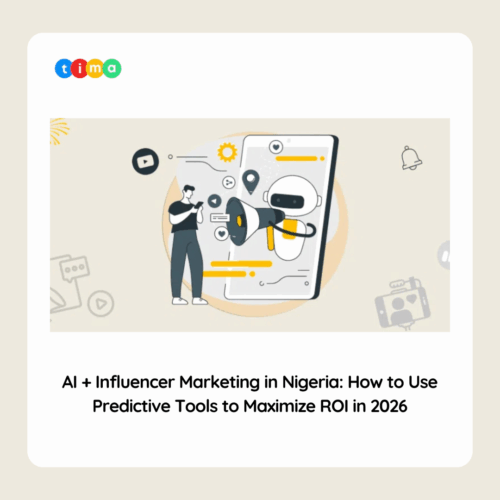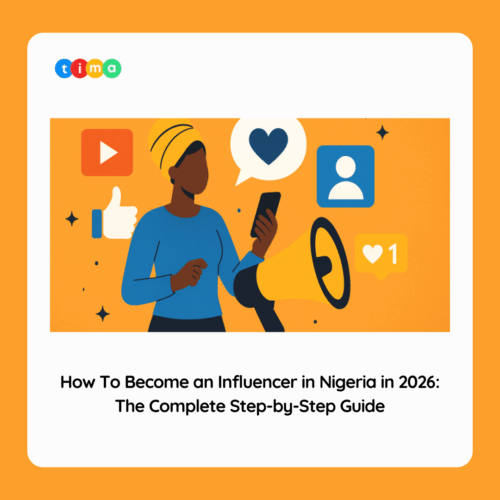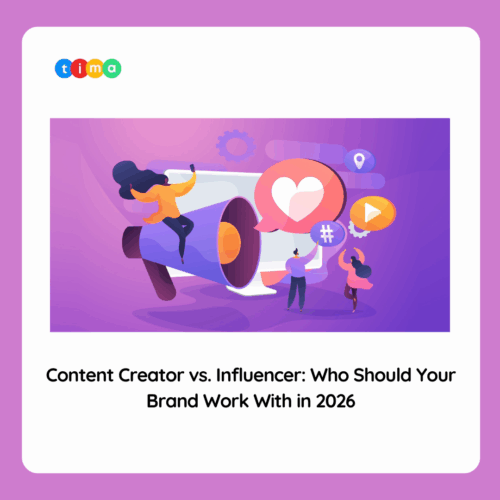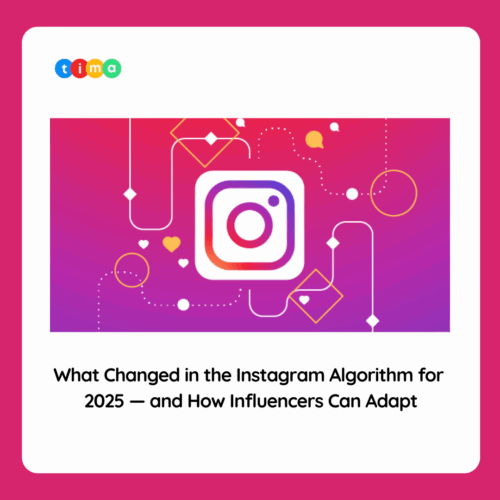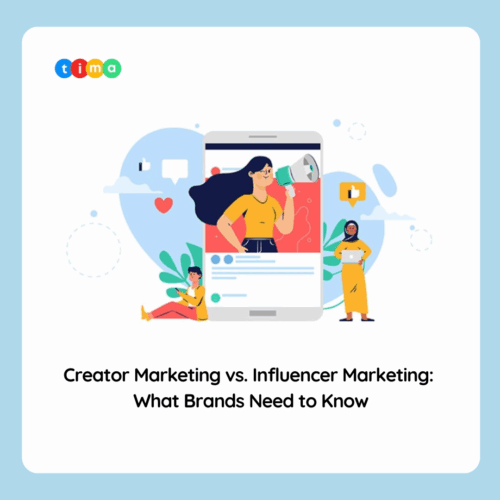Have you ever stared at a creator roster and wondered if the price tag matched the results? You are not alone. In 2026, influencer marketing in Nigeria is booming, but prices vary wildly, and the right spend depends on your objective, your metrics, and the creators you choose.
This guide gives you a clear, practical playbook for budgeting influencer campaigns in Nigeria. You will learn realistic price ranges for every influencer tier, how engagement and audience quality affect cost, sample budgets for different campaign goals, and negotiating and measurement tips to make every naira count.
Quick summary, what you will get from this guide
A simple pricing framework by influencer tier, with real examples
How engagement rate, average views, and audience fit change pricing
Typical deliverables and how they affect cost
Sample campaign budgets for awareness, consideration, and conversion goals
Negotiation tactics before you sign the contract
Measurement and ROI expectations, and what to demand in briefs
Why influencer pricing looks messy, but it can make sense
Influencer pricing is not arbitrary. It reflects a combination of audience size, content quality, historical performance, audience authenticity, platform, and deliverables. Two creators with similar follower counts can charge very different rates, depending on who their audience is, how engaged they are, and how much value their content has delivered in past campaigns.
To make pricing work for your brand, stop thinking only about followers, and start thinking about performance, reach quality, and cost per meaningful action.
Real price examples from Nigeria in 2026
Below are some concrete examples from TIMA’s recommendation list, so you can see how real creators price themselves.
Sydney Talker, Instagram, comedy and lifestyle, 5.5M followers, avg views 500,000, ER 1.0%, typical ask: $4,500 for 1 Instagram video post
Iyabo Ojo, Instagram, actress, 6.7M followers, avg views 350,000, ER 2.0%, typical ask: $7,000 for 1 Instagram video post
Temi Otedola, Instagram, fashion and lifestyle, 2M followers, avg views 500,000, ER 3%, currently negotiating
Shaffy Bello, Instagram, actress, 1.4M followers, avg views 500,000, ER 1.2%, typical ask: $2,500 for 1 Instagram video post
Zimee, Instagram, travel, 466K followers, avg views 100,000, ER 2.0%, typical ask: $2,000 for 1 Instagram video post
Dimma Umeh, Instagram, beauty and lifestyle, 232K followers, avg views 100,000, ER 3.09%, quoted $6,500
Joy David, Instagram, KOL education, 38K followers, avg views 40,000, ER 3.25%, quoted $2,800
Kagan Tech, Instagram, tech and business, 415K followers, avg views 50,000, ER 1.0%, quoted $1,800
These examples show how pricing does not follow a single rule. A creator with 232K followers might charge more than one with 466K, because engagement, niche value, or conversion history differ.
Pricing framework by influencer Tier
Use this simple framework to set expectations. Prices are for a single Instagram video post in Nigeria, 2026 market context. Adjust up for cross-posting, bespoke production, or exclusivity.
Nano (1K–10K followers)
Typical range: $50–$300
Best for highly niche local activations and community-driven campaigns.Micro (10K–60K)
Typical range: $200–$1,000
Great for targeted campaigns, high engagement, and lower cost per conversion.Micro+ (60K–100K)
Typical range: $700–$2,000
Balanced reach and engagement, often good for regional launches.Macro (100K–600K)
Typical range: $1,500–$6,000
Strong reach, professional quality content, and reliable performance.Macro+ (600K–1M)
Typical range: $3,000–$8,000
High visibility, sometimes celebrity adjacent.Mega (1M–10M)
Typical range: $5,000–$50,000+ depending on celebrity status, cross-platform demands, and exclusivity.
Examples from the list: Iyabo Ojo at $7,000, Sydney Talker at $4,500.
Notes: These ranges are a starting point, not rules. Expect to pay more for authorship, series content, or usage rights.
How deliverables change price
Think of a creator’s ask as a bundle of deliverables. The more you ask for, the higher the price.
Common deliverables and their price impact:
Single Instagram video post, baseline price
Instagram video + Story package adds 20–50%
Multi-platform distribution (IG + TikTok + YouTube) multiplies cost depending on reach and format
Serialized content (3–5 posts) often gets a volume discount, but expect a higher total spend
Custom production with a videographer, styling, props, locations, and editing drives costs up significantly
Usage rights for ads or evergreen use should be negotiated separately, this can double the fee for some creators
Example: If a macro influencer charges $2,000 for one video, adding a Story package might push the total to $2,500–$3,000.
Pricing by campaign objective, sample budgets
Different campaign goals require different budgets. Below are typical campaign types, the recommended creator mix, and a sample budget for Nigeria in 2026.
Awareness campaign, goal: reach and impressions
Creator mix: 3–5 macro creators OR 10–30 micro creators
Sample budget: $10,000–$30,000
Why: reach is king here, so use creators with strong view numbers.
Consideration campaign, goal: traffic and engagement
Creator mix: 5–10 micro and micro+ creators
Sample budget: $5,000–$15,000
Why: more creators gives you content variety and sustained engagement.
Conversion campaign, goal: sales or signups
Creator mix: 8–20 micro creators with trackable links or affiliate codes, plus 1–2 macro creators for endorsement
Sample budget: $8,000–$25,000
Why: diversify creators to test what converts, optimize for CPA.
Launch or product push, goal: high impact on a fixed date
Creator mix: 2–4 macro influencers and 10+ micro creators, plus paid promotion of top content
Sample budget: $20,000+
Why: coordination, production values, and boost spend require more budget.
These budgets are flexible depending on product price, market, and campaign duration.

How audience quality and engagement change cost
Two creators with similar follower counts may give very different results. Prioritize:
Engagement rate (ER) over follower count. Higher ER often means better conversions. For instance, a 4% ER is usually far more valuable than a 1% ER for cost per action.
Average views indicate organic reach, helpful for video content. A creator with 500K views on their videos but a lower ER may still be valuable for reach.
Audience match is crucial, your product should align with the creator’s audience demographics and interests. A relevant micro creator can cost much less, while delivering better ROI than a celebrity who does not match your target.
Examples from the list:
Frances Theodore, 250K followers, avg views 100K, ER 4.54%, quoted $2,800, likely strong on engagement and conversions for fashion and lifestyle brands.
Kagan Tech, 415K followers, avg views 50K, ER 1.0%, quoted $1,800, lower views and ER make them less efficient for reach, but their niche tech audience can be valuable for B2B or fintech brands.
Negotiation and contracting, practical tips
Clarify deliverables clearly in your brief, include format, captions, tags, and CTAs, so pricing reflects exactly what you want.
Ask for performance data from prior brand campaigns, not just follower counts. Request past campaign link and basic metrics if available.
Negotiate usage rights as a separate line item if you plan to use their content in paid ads or on your channels.
Offer performance-based incentives such as bonuses for hitting engagement or conversion targets, this can reduce upfront cost and align goals.
Agree on timelines and approval rounds, make sure you add a revision clause to avoid endless edits.
Use a standard contract that covers payment terms, cancellation policy, content ownership, and FTC-style disclosure for sponsored content.
Consider long-term partnerships rather than one-off posts, brands often secure lower rates and better authenticity with multi-post or ambassador deals.
How to measure value, not just impressions
Set clear KPIs before the campaign, such as:
Reach and impressions for awareness campaigns
Clicks and CTR for traffic campaigns
Promo code redemptions or affiliate conversions for sales campaigns
Leads generated and CPL for B2B campaigns
Engagement quality, such as saves, meaningful comments, and shares, which often predict virality
Always track outcomes with UTM parameters, influencer-specific promo codes, and post-campaign surveys or brand lift studies when possible.

Common pricing pitfalls and how to avoid them
Paying only for followers: always check engagement and audience authenticity.
Ignoring usage rights: usage in ads can be costly if not agreed upfront.
Discounting creative control completely: give creators guidelines but allow them space to speak in their voice.
Skipping contracts: verbal agreements lead to misunderstandings and missed deliverables.
No measurement plan: if you cannot measure, you cannot optimize.
Practical checklist for your next influencer budget meeting
Define campaign objective and target KPIs
Choose campaign type and ideal creator mix
Set a total budget range and per-creator target spend
Shortlist creators using TIMA data on views, ER, and audience match
Draft briefs with deliverables, timelines, and usage rights
Negotiate fees including performance bonuses, or long-term discounts
Use UTMs and unique codes for tracking, set reporting cadence
Book approval windows and payment terms in contract
FAQ
Q: Should I always choose the cheapest creator to save budget?
A: No, cheapest is rarely the most efficient. Value comes from relevance, engagement, and conversion, not just price.
Q: How long should a campaign run to see results?
A: For awareness, a 2–4 week window is typical, while conversion campaigns may need 4–12 weeks to fully materialize, depending on purchase cycles.
Q: How much should I reserve for boosting posts?
A: If you plan to amplify content via paid ads, reserve 20–50% of your campaign budget for media spend.
Q: How do I justify influencer spend internally?
A: Present clear KPIs, benchmark costs per action, and run a small test campaign with measurable goals. Use attribution and conversion tracking to build the business case.
Conclusion, make your budget work harder
Influencer marketing in Nigeria in 2026 is rich with opportunity, but it rewards preparation. Know your objective, choose creators based on performance and audience fit, negotiate clearly, and measure everything. With a thoughtful budget, creators can deliver both brand building and measurable ROI.
If you want to skip the guesswork and choose creators backed by performance data, TIMA helps brands shortlist verified creators, track campaign delivery, and measure impact across platforms. Start a Campaign with TIMA can turn your influencer budget into predictable results.



